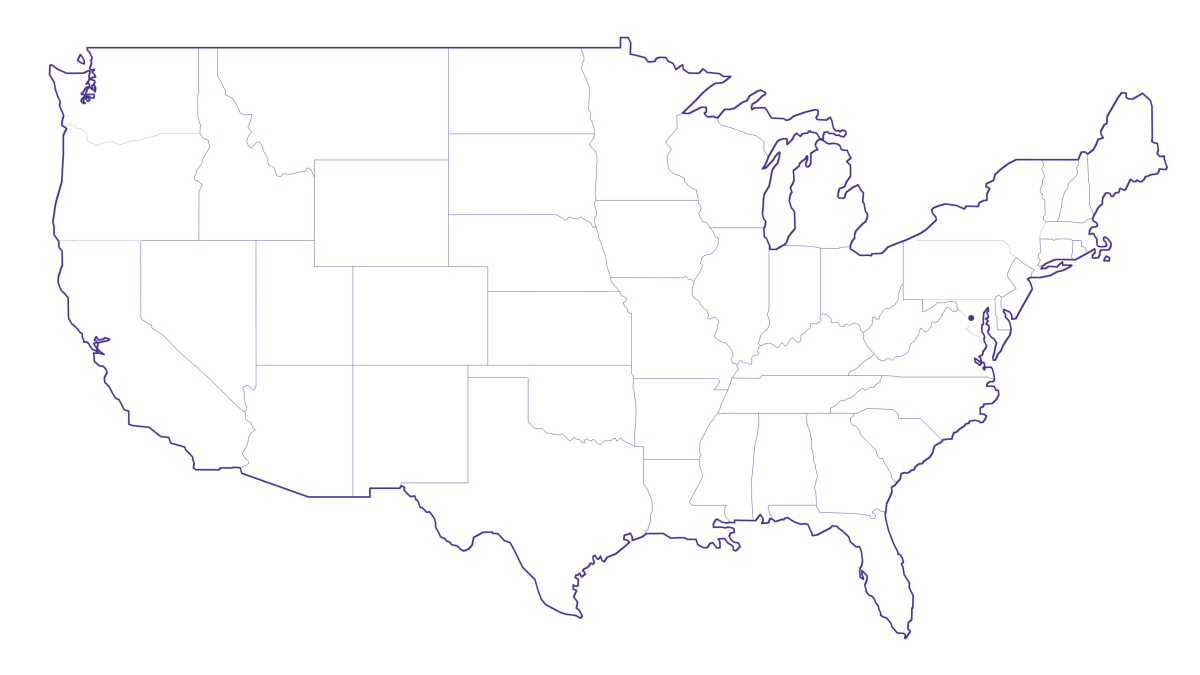Mesh WiFi vs. access points: What’s the difference?

As household WiFi demands grow, a single router often struggles to support multiple users and devices. That’s where solutions like mesh WiFi systems and WiFi access points come in, optimizing your WiFi network by offering better coverage and reliable connectivity throughout your home.
Compared to a traditional router, mesh WiFi helps eliminate dead zones by using interconnected nodes to provide a single, extensive whole-home WiFi coverage. Access points, on the other hand, extend your WiFi’s reach by creating wireless zones within fixed locations in your home to improve coverage.
But which setup is best for you? In this article, we’ll break down the differences between mesh WiFi and access points, helping you choose the right solution for your household’s needs.
What you'll learn:
- What is a WiFi access point?
- What are mesh WiFi systems?
- Mesh WiFi vs. access points: Head-to-head comparison
- Compare Mesh WiFi vs. access points
- Choose the right solution for your home
- Astound + eero: A smarter, scalable solution
- Bottom line: Mesh WiFi vs. access points
- Frequently asked questions
- Looking for more topics?
WiFi that just works!
WiFi plans for any home
Tiny, large or somewhere in between; find WiFi coverage to fit any space. Blanket your entire home with a fast and ultra‑reliable connection.
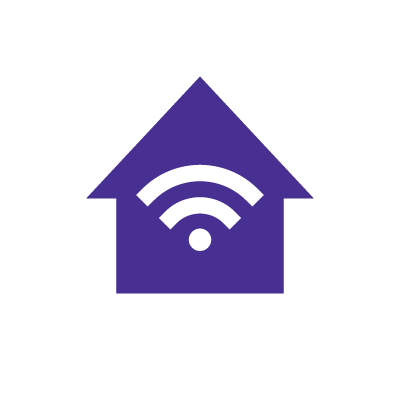
What is a WiFi access point?
A WiFi access point (WAP) is a device that extends your WiFi network’s coverage by creating a wireless local area network (WLAN) within a specific part of your home. It connects to your main router, switch or hub using Ethernet cables, also called Ethernet backhaul. The access point then broadcasts the WiFi signals that devices connect to.
This setup is known as a wired access point installation, which provides strong, stable coverage with lower latency and minimal interference. While wireless setups, such as WiFi extenders, can also function as WiFi access points, they rely on a WiFi backhaul and repeat existing signals, which can introduce higher latency and packet loss.
You can configure access points to either share the same network name (SSID) as your primary router for a seamless roaming experience or use separate SSIDs to create distinct zones. Separate SSIDs can help reduce network congestion, improve network control and simplify managing guest WiFi access or prioritize specific devices.
What are the pros and cons of using access points?
While WiFi access points provide many benefits, including coverage expansion, supporting more devices and maintaining a stable connection, they also come with trade-offs. Let’s take a look.
Pros of WiFi access points
-
- Increased network coverage: Access points extend WiFi coverage to hard-to-reach areas, like upstairs, basements or outdoor spaces where the main router falls short.
- Stable connections: Because access points connect to the main router via Ethernet cables, they deliver strong, reliable signals with minimal interference.
- Improved device support: Access points support the latest WiFi standards and can handle multiple devices at once, including laptops, gaming consoles, smartphones and smart home devices.
- Custom network control: You can configure WAP installations with separate SSIDs to create different networks for more security control and flexibility.
Cons of WiFi access points
However, there are certain limitations to WiFi access points in terms of cost, setup and management.
- Setup complexity: Setting up access points is generally more complex, involving Ethernet wiring and configuring the network manually.
- Higher cost: The initial cost of setting up WiFi access points can be higher, especially if you want professional installation, wiring and configuration, making the upfront investment higher than plug-and-play options like mesh WiFi.
- Network management: WiFi access points require hands-on configuration and management, unlike mesh systems, which allow users to configure the network through a mobile app.
- Limited roaming: If each access point uses a unique SSID, devices won’t automatically switch between zones, causing connections to drop as you move around the house.
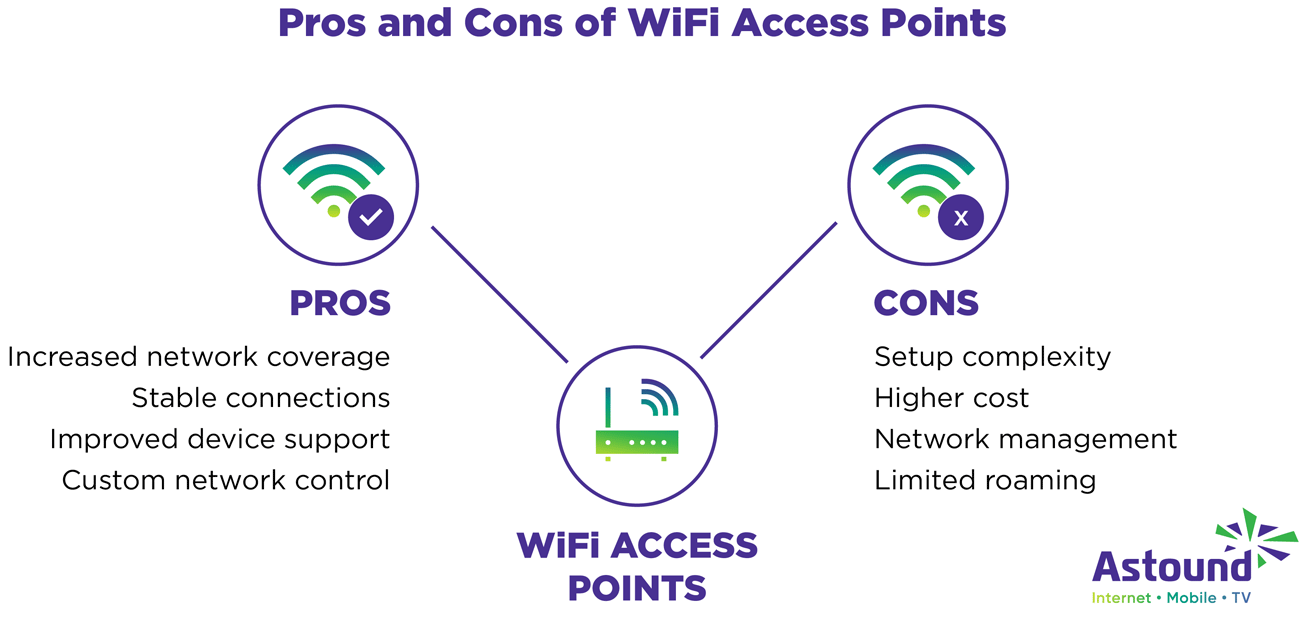
Access points are ideal for homes with existing Ethernet infrastructure or for users who require dedicated coverage for specific areas.
What are mesh WiFi Systems?
A mesh WiFi system is a home networking solution that uses multiple interconnected nodes to create a single seamless whole-home WiFi network.
Unlike standard routers, which broadcast from a single point, mesh systems distribute the signals through a network of devices working together. One node connects to the modem or primary router, while the other nodes communicate with it to broadcast the signals, maintain consistent speeds and expand coverage. This approach helps eliminate dead zones and ensure reliable whole-home coverage.
How mesh WiFi works
Mesh WiFi systems utilize multiple nodes to establish a wireless mesh architecture, where nodes dynamically share traffic using the most efficient path. All nodes share the same SSID, allowing for seamless roaming throughout the house.
The mesh system is a self-healing network, meaning that if a node fails, the network automatically reroutes traffic to the remaining nodes to maintain connectivity. You can also expand WiFi coverage by installing more mesh nodes throughout your home.
What are the pros and cons of mesh WiFi?
Mesh WiFi systems offer many benefits that improve connectivity across your home. These benefits include.
- Seamless whole-home coverage: Mesh nodes work together to provide a consistent WiFi connection across the house to eliminate dead zones.
- Easy setup and management: Mesh systems like eero make installation simple, with the intuitive eero mobile app guiding you through setup and day-to-day network management, even if you’re not tech-savvy.
- Minimal disruption: Devices automatically switch to the strongest available node, keeping you connected as you move from room to room.
- Scalable and flexible: You can add nodes as needed to increase coverage without having to reconfigure your network.
- Built-in security: eero mesh WiFi includes eero Secure and eero Plus, offering security features such as content filtering, threat protection and ad blocking to protect your home network.
- Smart home compatibility: Mesh systems are ideal for smart home mesh coverage, supporting multiple high-bandwidth smart home devices without compromising speed or stability.
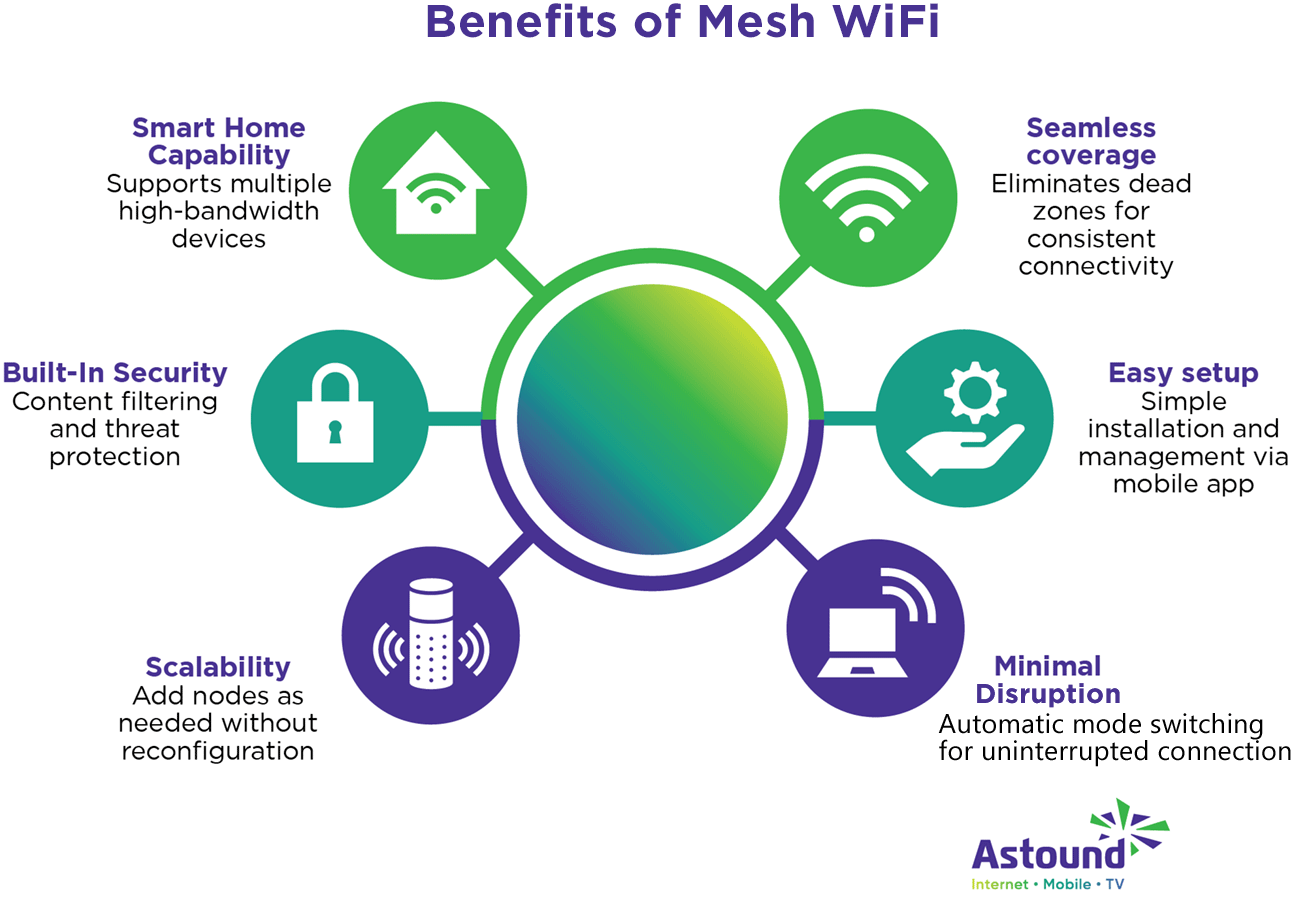
Mesh WiFi vs. access points: Head-to-head comparison
While both options extend WiFi coverage, they differ significantly in their design, performance and management. Here’s how they compare.
Coverage
- Mesh WiFi: Mesh systems use multiple nodes placed throughout your home to create a unified whole-home coverage. Proper mesh node placement is essential to maintain faster speeds, broaden coverage and minimize performance drops, which helps eliminate dead zones in hard-to-reach areas.
- Access points: While a single access point can deliver a strong, stable signal within its zone, its coverage is limited to that specific area. To match the unified reach of a mesh system, you’ll need multiple access points sharing the same SSID placed throughout the home, each connected back to the main router using Ethernet cables. However, improper placement of access points might result in signal overlap, causing interference and reducing efficiency.
Mesh WiFi with
eero Secure
Enhanced Whole Home WiFi uses multiple routers (or eeros®) to boost range, speed and stability—while eero Secure, included at no extra cost, offers parental controls, ad blocking and internet backup for constant connectivity.
Performance
-
- Mesh WiFi: Mesh WiFi systems optimize internet performance by dynamically routing traffic through the strongest available node. Even if one node fails, the system reroutes traffic automatically to maintain consistent speeds. This design makes mesh networks ideal for homes with multiple users and connected devices.
For gamers, mesh WiFi for gaming, especially with a gaming router, delivers stable speeds across rooms and floors while supporting multiple devices. eero mesh systems also support device and gaming traffic prioritization, helping reduce lag and latency for a smooth gaming experience. - Access points: WiFi access points connect directly to your primary router using Ethernet backhaul, delivering fast speeds and consistent connections. This setup minimizes interference and latency, making it ideal for fixed setups like home offices and latency-sensitive applications like gaming and video conferencing.
However, the speed of access points varies depending on placement, and performance may drop in areas not directly covered.
- Mesh WiFi: Mesh WiFi systems optimize internet performance by dynamically routing traffic through the strongest available node. Even if one node fails, the system reroutes traffic automatically to maintain consistent speeds. This design makes mesh networks ideal for homes with multiple users and connected devices.
Installation complexity
- Mesh WiFi: Mesh WiFi systems like eero mesh WiFi provide a simple, user-friendly, DIY installation guide using an intuitive mobile app that is ideal for non-technical users.
- Access points: Wired access point installation can be complex, requiring expertise that involves running Ethernet cables through walls to connect each access point device to the primary router, along with manual network configuration. Some access point models also support Power over Ethernet (PoE), which simplifies installation by delivering both power and data through an Ethernet cable, removing the need for an extra power outlet.
Price
- Mesh WiFi: Mesh WiFi systems tend to have higher upfront costs. Brands like eero offer 3-node packs that range from around $150 to over $1,000, depending on the model and WiFi standard supported (WiFi 6 or WiFi 7). However, they include additional security features through eero Secure and eero Plus to protect your network.
- Access points: Individual access points are typically less expensive per unit. Still, the total cost can rise when multiple access points are needed and taking into account any professional installation required to set them up.
Network management
- Mesh WiFi: Mesh WiFi systems like eero offer easy app-based network management, allowing you to set up parental controls, monitor devices and optimize performance through the phone.
- Access points: These require more hands-on configuration, which involves logging into the device’s admin interface or using third-party network management software.
Roaming
- Mesh WiFi: Mesh WiFi enables seamless roaming by using a unified SSID across nodes, allowing your devices to connect to the strongest nearby node without dropping the signal as you move from room to room.
- Access points: Using separate SSIDs on access points helps manage network traffic across different zones, but it disrupts seamless roaming. Devices won’t switch automatically between access points, which causes brief interruptions during streaming, gaming or video calls. To ensure smooth roaming, configure all access points to use the same SSID.
Device capacity
- Mesh WiFi: Mesh systems like eero can support 50+ devices on base models and up to 200+ devices on the latest advanced models. By intelligently distributing traffic among multiple nodes, mesh networks can handle multiple devices running simultaneously.
- Access points: Access points typically support 100 to 200 devices per unit. However, if multiple access points are not correctly set up or balanced, device performance may vary across zones, leading to network congestion and roaming limitations.
Compare Mesh WiFi vs. access points
| Feature | Mesh WiFi | Access Points |
|---|---|---|
| Coverage | Multiple nodes placed throughout the home create unified, whole-home coverage. Proper node placement helps eliminate dead zones and maintain speeds. | Each access point covers a specific area. Full-home coverage requires multiple access points with a shared SSID. Improper placement can cause interference. |
| Performance | Routes traffic dynamically through the strongest node. Its self-healing design ensures minimal performance drops and reduces lag, making it ideal for gaming and streaming. | Connects directly to the router using Ethernet backhaul for stable, low-latency connections. Performance may drop in areas with uncovered or poorly placed access points. |
| Installation Complexity | DIY-friendly setup with an intuitive mobile app. Great for non-technical users. | More complex setup requiring Ethernet cabling and manual configuration. Some models support Power over Ethernet (PoE) for simplified power and data delivery. |
| Price | Higher upfront cost ($150 to $1,000 for 3-node packs), but includes security features like eero Secure and eero Plus. | Lower per-unit cost, but total cost may increase when multiple units and professional installation are needed. |
| Network Management | App-based management allows for parental controls, device monitoring and performance optimization via phone. | Requires hands-on configuration through a device’s admin interface or third-party software. |
| Roaming | Uses a unified SSID across nodes for seamless roaming. Devices automatically switch to the strongest nearby node. | Often uses separate SSIDs, which disrupt roaming. Seamless roaming is possible with a shared SSID. |
| Device Capacity | Supports 50+ devices on base models and up to 200+ on advanced models. Distributes traffic intelligently among nodes. | Typically supports 100 to 200 devices per unit. Performance may vary across zones if not correctly balanced. |
|
Feature
Coverage
|
Mesh WiFi
Multiple nodes placed throughout the home create unified, whole-home coverage. Proper node placement helps eliminate dead zones and maintain speeds. |
Access Points
Each access point covers a specific area. Full-home coverage requires multiple access points with a shared SSID. Improper placement can cause interference. |
|
Feature
Performance |
Mesh WiFi
Routes traffic dynamically through the strongest node. Its self-healing design ensures minimal performance drops and reduces lag, making it ideal for gaming and streaming. |
Access Points
Connects directly to the router using Ethernet backhaul for stable, low-latency connections. Performance may drop in areas with uncovered or poorly placed access points. |
|
Feature
Installation Complexity |
Mesh WiFi
DIY-friendly setup with an intuitive mobile app. Great for non-technical users. |
Access Points
More complex setup requiring Ethernet cabling and manual configuration. Some models support Power over Ethernet (PoE) for simplified power and data delivery. |
|
Feature
Price |
Mesh WiFi
Higher upfront cost ($150 to $1,000 for 3-node packs), but includes security features like eero Secure and eero Plus. |
Access Points
Lower per-unit cost, but total cost may increase when multiple units and professional installation are needed. |
|
Feature
Network Management |
Mesh WiFi
App-based management allows for parental controls, device monitoring and performance optimization via phone. |
Access Points
Requires hands-on configuration through a device’s admin interface or third-party software. |
|
Feature
Roaming |
Mesh WiFi
Uses a unified SSID across nodes for seamless roaming. Devices automatically switch to the strongest nearby node. |
Access Points
Often uses separate SSIDs, which disrupt roaming. Seamless roaming is possible with a shared SSID. |
|
Feature
Device Capacity |
Mesh WiFi
Supports 50+ devices on base models and up to 200+ on advanced models. Distributes traffic intelligently among nodes. |
Access Points
Typically supports 100 to 200 devices per unit. Performance may vary across zones if not correctly balanced. |
Choose the right solution for your home
Choosing the best home WiFi solution for your home depends on your home’s size, layout, number of users and devices and how you use the internet.
Mesh WiFi for a large home
Mesh WiFi is ideal for a large home with multiple floors, thick walls and dead zones where signals from a single router cannot reach. By placing the mesh nodes throughout the house, you ensure coverage without signal drops, thanks to its self-healing nodes, seamless roaming and intelligent traffic routing.
For example, one Reddit user planning a WiFi setup for two homes debated between a mesh WiFi system and access points. Although planning to use a wired backhaul for either setup, they preferred mesh WiFi for its ease of setup, centralized control and seamless roaming, finally choosing it for the balance of reliability and convenience.
If you’re planning a home network upgrade, mesh WiFi is a future-proof, scalable solution that’s also easy to manage. As your needs grow, simply adding more nodes to the mesh network will improve network coverage without rewiring or reconfiguration.
WiFi access points for a home
Access points are ideal if you prefer a wired solution and want to set up dedicated zones within your home, like a home office, gaming room or outdoor space. Because they connect directly to your router using Ethernet backhaul, access points deliver fast, reliable performance in specific areas.
Additionally, access points are the better option if you desire more control over network management, like security settings, SSID configurations and device prioritization.
They’re also effective in smaller homes or apartments, where full-home coverage isn’t a challenge and running Ethernet cables isn’t an issue.
Build your plan
Your perfect plan is just a click away
Get the speeds, WiFi, mobile and TV plans you need all at an affordable price. Bundle your services with Astound and see how much you can save.

Astound + eero: A smarter, scalable solution
For modern households relying on high-bandwidth usage like 4k streaming, online gaming, smart home connectivity and remote work, Astound’s eero mesh WiFi system provides a seamless whole-home WiFi experience.
This solution combines the trusted performance of Astound’s fiber-powered internet with eero’s advanced mesh WiFi technology, providing reliable and seamless whole-home coverage backed by a reliable internet service provider.
And with eero mesh WiFi included at no extra cost when you subscribe to Astound’s Gig-speed internet plans, you’ll enjoy:
- Whole-home coverage with seamless roaming across your home.
- Support for multiple devices with automatic traffic routing and device prioritization.
- Blazing fast Gigabit speeds, with eero routers supporting up to 2 Gbps and up to 5 Gbps with the new eero Max 7.
- Built-in security through eero Secure and eero Plus, providing security features like parental controls, threat protection, VPN support and ad blocking.
- App-based network control via the eero mobile app to manage settings, diagnose issues and set up guest WiFi access from your phone.
Scalability and flexibility by adding more mesh nodes for better coverage as your household’s internet demands grow.
Additionally, bundling Astound’s mobile services (unlimited data) with Gig internet plans unlocks $30 in monthly savings, making it easier to upgrade to a faster, more secure WiFi network without stretching your budget.
Bottom line: Mesh WiFi vs. access points
While both technologies improve coverage and performance, choosing between the two comes down to your home’s layout, internet needs and how involved you want to be in managing your setup.
Mesh WiFi systems offer user-friendly setup, seamless roaming and whole-home coverage, making them ideal for larger homes that want fast, extensive and reliable connections without manually configuring and managing the network setup.
Access points, on the other hand, deliver fast and reliable speeds in specific areas and give users more hands-on network control. They are ideal for homes with an existing wired internet setup and users who need to prioritize performance in key areas like their home offices or entertainment rooms.
Ultimately, the right choice should align with your connection needs, technology preferences and preferred internet setup.
EERO INTERNET BACKUP
We’ve got your back(up)
eero Internet Backup lets you add alternative wireless connections – like a personal hotspot – to keep your WiFi up and running even when your wired connection is disrupted.
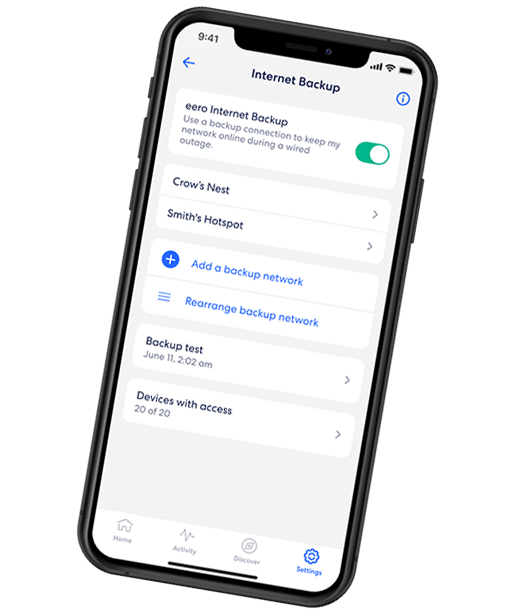
Frequently asked questions
Is mesh WiFi better than a wireless access point?
Mesh WiFi offers an easy, app-guided setup and delivers whole-home coverage and seamless roaming between rooms without dropping connections. On the other hand, access points provide a strong performance in dedicated zones but often require hands-on network configuration and management.
What is the difference between mesh WiFi and an access point?
Mesh WiFi systems use multiple interconnected nodes to form a single whole-home wireless network across your home. In contrast, an access point is a device that extends your network coverage within a specific area using a wired connection back to your router.
Do mesh networks need access points or routers?
Mesh networks do not need separate access points or routers. Mesh systems consist of a central node (router) that connects to your modem, which communicates with other nodes to create a single extensive WiFi network.
How many mesh nodes do I need for my home?
The number of mesh nodes you need depends on your home’s size and layout. Most apartments or small homes need two to three nodes for full coverage. Larger homes with multiple floors and thick walls may require more than four nodes to ensure extensive coverage and consistent performance.
Do you lose speed with mesh WiFi?
Mesh nodes can experience slower internet speeds and a drop in performance if you place them too far apart or next to physical obstacles like thick walls and metal appliances. Placing the nodes in central, open locations helps minimize interference and enables the system to deliver consistent speeds and coverage.
Create the perfect bundle
Get the speed, WiFi, mobile and TV that’s just right for you.
*Internet speeds vary, not guaranteed. Certain equipment may be required. See astound.com for details. Modem req’d. No contracts. Astound Internet is powered by fiber and connected to the premises via coaxial connection or fiber, where available. Delivery methods may vary by area. Subject to availability. Ltd-time offer; subj. to change without notice. Internet speeds under 1 Gig, pricing valid for 12 mos. Gig+ Internet speeds, pricing valid for 36 mos. Add’l fees apply for taxes, surcharges, & data overages, & are subj. to change. For details visit astound.com/fees. Enhanced WiFi or Whole Home WiFi included with Gig+; $5/mo for lower speeds or add’l devices. Regular rates apply after promo ends. Monthly price shown includes discount for enrolling in autopay & e-bill. $10 off/mo w/ bank acct autopay or $5 off/mo w/ credit/debit card autopay. Valid email & enrollment req’d. Must enroll w/in 30 days of order. Discount appears within 3 bill cycles, ends if autopay/e-bill is canceled, svcs change, or acct isn’t in good standing. ^Astound Mobile req’s Astound Internet service for activation. Max 5 lines. Equip., intl./roaming charges, taxes, fees extra & may change. Astound not liable for svc disruptions or outages. Higher rate applies if Internet not maintained. Mobile svc only in Astound areas. Pricing subj. to change. Data may slow during congestion. After 20GB, Unlimited plans slow to 768 Kbps; 1.5GB/3GB plans capped. No rollover; add’l data $10/GB. Coverage varies. Some features may require specific plans. Mobile svc includes BIAS w/ data, voice, texts & SMS. Other restrictions may apply. See astound.com/mobile for details. Offer valid for new res. customers or former customers in good standing w/out Astound svc in past 60 days. Add’l svcs, equip, premiums & tiers extra & subject to add’l charge & reg. increases. $14.99 one-time activation fee (plus install) applies & may change. Taxes & surcharges extra & subj. to change. WA RESIDENTS: unless otherwise specified, price does not include 2% Regulatory Administration Fee. Cust. responsible for any accrued charges. Subj. to credit check. Not all svcs/speeds avail. in all areas. 30-Day Money-Back Guarantee for new residential customers who cancel within 30 days of install. Maximum refund is equal to one month’s monthly recurring service fee of services & equip. ordered & installed. Refund within 60 days after conditions are satisfied. Refund not applicable to usage-based fees. All svcs are governed by Astound Customer Terms & Conditions found at astound.com/policies-disclaimers. © 2025 Radiate HoldCo, LLC d/b/a Astound Broadband. All rights reserved.
While we have made every attempt to ensure that the information contained in this site has been obtained from reliable sources, Astound is not responsible for any errors or omissions, or for the results obtained from the use of this information. All information in this site is provided “as is”, with no guarantee of completeness, accuracy, timeliness and without warranty of any kind, express or implied, including, but not limited to warranties of performance, merchantability and fitness for a particular purpose. Certain links in this site connect to other websites maintained by third parties over whom Astound has no control. Astound makes no representations as to the accuracy or any other aspect of information contained in other websites.
eero Plus is available for an additional $9.99/month and requires subscription to whole home WiFi powered by eero.


